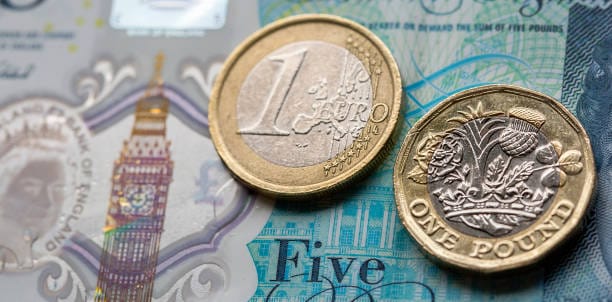GBP/EUR exchange rate week review: pound nosedives against euro amid hotter-than-expected Eurozone inflation
The pound was subdued against the euro before a hotter-than-expected Eurozone inflation print caused it to tumble at the end of the week.

(27/05/2024 to 31/05/2024)
Monday
The pound euro (GBP/EUR) exchange rate consolidated in the 1.17 mid-range amid low market trading volumes, with pound sentiment holding firm on the UK spring bank holiday.
The euro was hindered by weaker-than-expected German business confidence data for May. Overall confidence in the Eurozone economy picked up during May, but the latest data represented a setback.
The German IFO business confidence index remained unchanged at 89.3 versus forecasts of a further recovery to 90.4.
The single currency was hampered further by dovish comments from European Central Bank (ECB) Chief Economist Phillip Lane, who said: “Barring major surprises, at this point in time there is enough in what we see to remove the top level of restriction.”
Euro investors took solace in Lane’s more cautious outlook for a series of rate cuts. In this context, he added: “The best way to frame the debate this year is that we still need to be restrictive all year long.”
Tuesday
The pound was trapped in a narrow range near a multi-month high, despite robust UK retail data, before sliding to 1.174.
Sales surged in May according to the closely watched Distributive Trades Survey from the Confederation of British Industry, as selling price inflation continued to recede. The survey showed retail sales volumes grew at their fastest pace since December in the year to May, with a weighted balance of 8%, compared to April’s balance of -44.
However, the pound was muted by a mixed market mood and diverging Bank of England (BoE) interest rate cut speculations.
The euro treaded water amid a lack of influential Eurozone data, bringing ECB rate cut chatter into sharp focus for investors. Market expectations of a June cut continue to be driven by cooling Eurozone inflation and dovish rate-setter rhetoric.
Klaas Knot, Chief of the Dutch Central Bank, said: “Policy rates will slowly but gradually move to less restrictive levels.”
Contact a currency specialist to discover how they can help you take control of exchange rates.
Wednesday
The pound euro exchange rate remained directionless following the publication of Germany’s latest CPI data. Inflation in the Eurozone’s largest economy heated up as expected, rising from 2.2% to 2.4% in May.
Despite the hotter-than-forecast inflation print, the single currency struggled to attract investor attention, likely due to its negative correlation with the rising dollar.
Thursday
The pound traded without a clear trajectory in the 1.17 mid-range, despite positive economic data from the Eurozone.
Unemployment hit a record low of 6.4% across the bloc in April. Additionally, in May, economic sentiment in the euro area ticked higher to 96, up from April’s reading of 95.6, but missed expectations of a 96.2 print.
A prolonged data lull in the UK meant the pound remained insipid.
Friday
The pound euro rate retreated towards 1.17 following a hotter-than-expected Eurozone inflation print.
Investors piled into the single currency after Eurozone consumer prices jumped to a four-month high in May. The annual rate of inflation rose to 2.6%, up from 2.4% in April. The figure was higher than the 2.5% forecast and is a threat to the ECB’s rate cut aspirations.
The pound was defenceless against the euro’s march as its streak of minimal data continued.
The pair ended the week at 1.173.
Looking ahead
The ECB’s June interest rate announcement will be the main catalyst for pound euro movement next week. On Tuesday, it’s widely expected to become the first major central bank to cut rates in 2024. While this could sap investor sentiment towards the euro, its losses may be capped with the surprise factor removed.
Another data-light week in the UK means Tuesday’s British Retail Consortium (BRC) retail sales monitor for May could lift the UK currency if it matches the forecast for a 2.8% increase in sales.
